From E133 to MSG: Your guide to food additives
In The Food Programme, Sheila Dillon is delving into the world of food additives – from Vitamin C and fruit-flavoured sherbet to the E numbers adding flavour to our ultra-processed foods. She explores some of the impacts, questions and controversies around these added extras.
Food additives are confusing, divisive and sometimes scary. What are they for? Are all E numbers bad for us? How do we know which ones we should swerve? Read on for our beginner’s guide to food additives.

-
![]()
Listen to The Food Programme
Exploring the world of additives, from fruity sherbert to ultra-processed-food flavourings
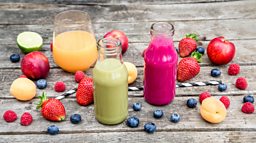
What are additives for?
There are various reasons why additives get, well, added to our food. It could be that they are enhancing taste, texture, or appearance – or they might be used to extend the shelf life of a product. In many cases, these additives help to keep costs down. It’s much cheaper to use lemon, chocolate or prawn flavour than it is to use the real fruit, cocoa solids or genuine prawns.
What is an E number?
All the additives in our food are regulated by EFSA, . This is an independent body which is funded by the EU. Essentially, E number just means approved by the EU.
The idea that an E number is fundamentally bad for you or toxic isn鈥檛 true. A tomato for example, contains seven different E numbers.
Most of us associate E numbers with unnatural ingredients. But the idea that an E number is fundamentally bad for you or toxic isn’t true. A tomato for example, contains seven different E numbers including Glutamate (which we know as MSG), Carotene (E160a) and Riboflavin (E101). There are even E numbers for Oxygen and Nitrogen.
So E numbers aren’t dangerous in themselves. However, many believe that some can have adverse effects when consumed in large quantities. The important thing is to get the balance right with the types of foods we’re eating and particularly the amount of processed foods, which contain more of these additives.
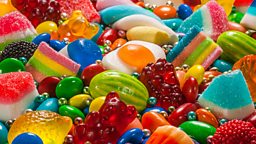
What are some of the common additives?
Monosodium Glutamate
One the most well-known food additives is MSG, which is used for its flavour-enhancing properties. And it has a bit of a reputation: many people claim that it causes allergies - bringing them out in a rash if they eat too much Chinese food! However, most scientists today agree that the idea that MSG causes headaches of allergies in humans is unfounded. The Japanese are the world’s largest consumer of MSG per capita but they have the second longest lifespan and the lowest obesity rates in the entire world.
Glutamate occurs naturally in many foods like parmesan, seaweed, peas and walnuts. And it’s what gives us umami – our fifth taste. These days, MSG is made from sugar cane or molasses.
Preservatives
Preservatives are added to food to stop spoilage caused by bacteria. They keep foods fresher and safe to consumer for longer. As far back as Ancient Rome salt was being used to preserve food. Modern preservatives include sulphites in wine, sorbic acid in cheese or nitrates in meat products.
You may have heard the scare stories around nitrates used in bacon and ham, which are reported to contribute to cancer. It’s true that when you look at these chemicals in large amounts you can get some carcinogenic effect in animals, but most experiments are using thousands of times the dose that we would naturally consume. Again, it’s all about balance and moderate consumption of processed foods.
Antioxidants
While preservatives protect against microorganisms, antioxidants help to stop the spoiling effect that oxygen has on our foods. Fats and oils and the foods containing them (like crisps, for example) are most likely to suffer from oxidation and go rancid. The fats react with oxygen and begin to decompose, developing unpleasant flavours and odours! The most commonly used antioxidant in food is naturally occurring Ascorbic acid (E300) or Vitamin C. Think about how adding lemon juice to a chopped apple or lime to your guacamole will stop it going brown.
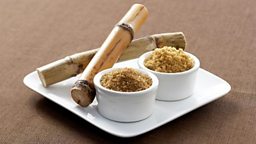
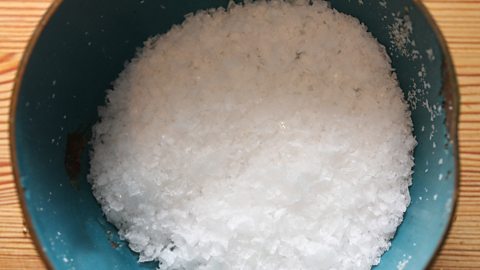
Salt danger: where it's hidden in food and drink
High blood pressure is simply a consequence of too much salt.
Sweeteners
Sweeteners are the category of additives that have created the most controversy in recent years.
Experts in the microbiome believe artificial sweeteners could be detrimental because your microbes react against them and produce other chemicals in response.
Studies have shown that two sweeteners – Aspartame and Sucralose – may cause an increased risk of cancer. EFSA looked at the studies, found that they were seriously flawed and not carried out using international guidelines and discredited them. However, other scientists have questioned ESFA’s methods for testing and say they should be more rigorous. The debate rumbles on…
On another note, experts in the microbiome believe artificial sweeteners could be detrimental because microbes react against them and produce other chemicals in response that can have effects like causing diabetes or putting on weight.

Colours
We add colours to our food to make it look more appealing. Ancient Egyptian sweet-makers are thought to have jazzed up their products with natural colourants as early as 1500 BC. These days artificial food dyes are behind the bright colours in many of our lollies, fizzy drinks and baked goods. “Brilliant Blue” (E133) for example is the greeny-blue colour used in ice-cream or canned peas.
Some claim that these colours are toxic, and contribute to hyperactivity in children. You can swerve them by looking for natural food colours like beetroot and turmeric.

Emulsifiers
Emulsifiers make it possible for water and oil to mix – creating a stable, homogenous and smooth substance. A natural emulsifier is egg. Emulsifiers are deemed safe if they aren’t toxic but they do pose another risk. Obesity is the greatest diet-related risk to public health in the UK, and one reason why obesity has risen so sharply over the last 25 years could in part be due to the use of emulsifiers in highly processed foods, which allows them to contain more oil and fat.
Stabilisers
Stabilisers are used to maintain the consistency of food, by binding its large molecules. They prevent the separation of ingredients that are bound together by emulsifiers. Common stabilisers include gelatin or pectin. The foods commonly using stabilisers are ice cream, spreads and mayonnaise.
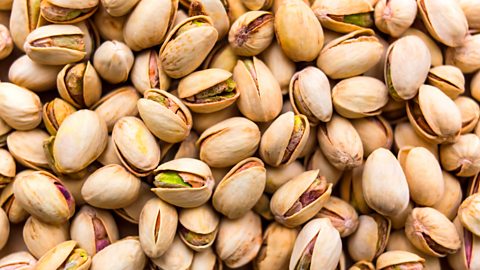
Why do you develop a food allergy?
The probable causes of allergies and why they're increasingly prevalent in young people.
The important thing is to get the balance right with the types of foods we鈥檙e eating and particularly the amount of processed foods.
Thickeners
Thickeners are for adding body to foods and increasing viscosity. A common thickener is Maltodextrin – a white powder made from corn, rice, potato starch, or wheat that doesn’t have a taste of its own or any nutritional value. Maltodextrin is essentially a sugar and carbohydrate which means that it can cause a spike in your blood sugar if eaten in large quantities.
To learn more about additives listen to The Food Programme special.
More from Radio 4 in Four
-
![]()
Food Additives, Part 1: Sherbet and other E number experiments
Exploring the world of additives, from fruity sherbert to ultra-processed-food flavourings.
-
![]()
What to eat when you're exercising
How what you eat affects your atheletic performance.
-
![]()
How Instagram has changed the food we eat
Some of the ways in which social media platforms have fed what we eat.
-
![]()
Are carbs your friend or foe?
We attempt to bust some of the myths surrounding this hotly debated topic.




